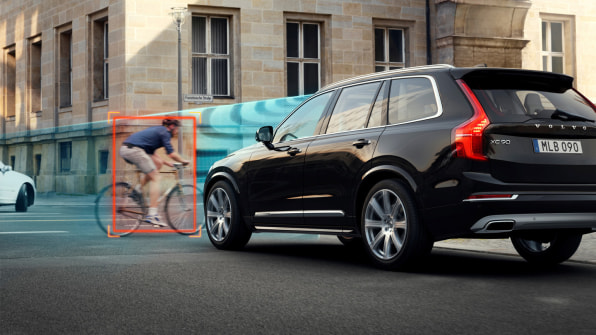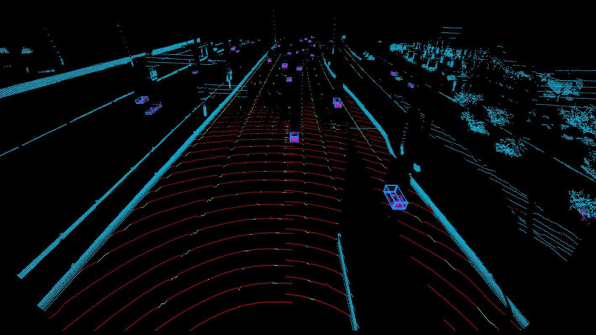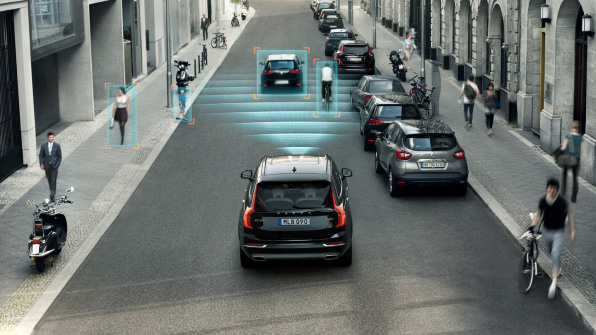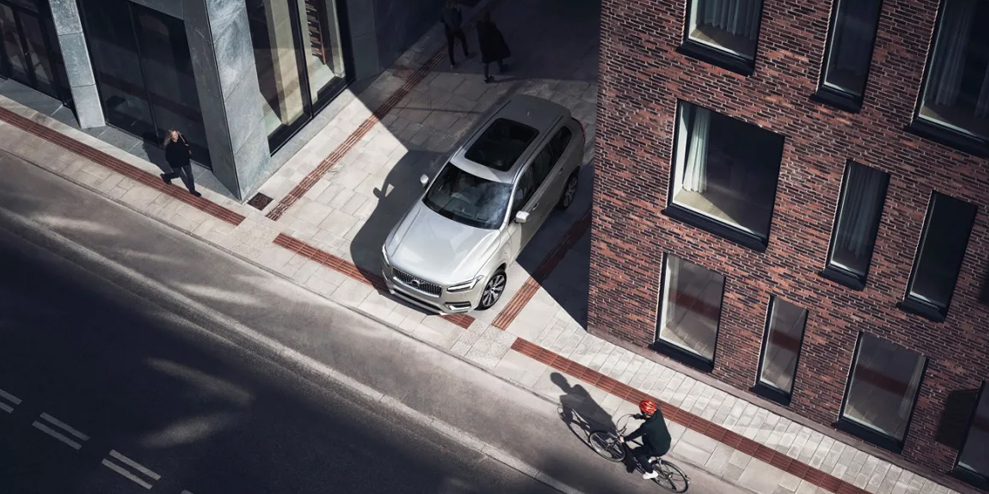Cars have become safer for drivers, but pedestrians have paid the price. Volvo wants to change that
According to a detailed database of tens of thousands of car crashes that Volvo has been keeping since the 1970s, who gets hurt in car crashes is changing—and it’s forcing the company to rethink what car safety means.
Cars crash, and people get hurt. This is the reality of a world built around 2-ton vehicles that can travel at high speeds. But according to a detailed database of tens of thousands of car crashes in Sweden that the Volvo has been keeping since the 1970s, who gets hurt in these crashes is changing—and it’s forcing the automaker to rethink what car safety means.
“Because a lot of the development in the past years has led to a lot safer car-to-car crashes, people don’t get injured as often when a car crashes with another car,” says Mikael Ljung Aust, senior technical leader at Volvo’s Safety Center. One study comparing crashes in car models from the 1980s against those from the 2010s found that the newer cars had a 22% lower risk of injury and a 66% lower risk of death. When it comes to car crash injuries today, car-to-pedestrian and car-to-cyclist crashes are taking up a larger portion of the database. “It’s the new challenge,” he says. “We need to deal with vulnerable road users.”

Volvo’s goal is to design car safety features that can better protect pedestrians and cyclists, including everything from auto-braking technology that detects people as well as other cars to still-nascent systems for nudging drivers into avoiding driving behavior that could be dangerous to people on the road who aren’t protected by the cage of a car’s steel frame.Doing this relies on understanding more about the crashes that affect pedestrians and cyclists. Beginning about 10 years ago, Volvo began augmenting its database with information about Volvo crashes beyond the typical car-to-car scenario. Using insurance and police reports along with interviews with car drivers, occupants, victims, and witnesses, the company creates detailed profiles of the circumstances around these crashes, according to Magdalena Lindman, a Volvo technical expert in traffic safety data analysis. “For crashes happening close to Gothenburg, where we are located, we actually do even more investigations on each crash,” she says. “We go out to the crash scene.”
For these crashes, Lindman says, the research team at Volvo can create in-depth case studies, sometimes even turning them into macabre animations that the engineering teams can use to guide their work. “We can see this is really what happened and we can design a system for it,” she says.
Though some of these crashes are unique to the conditions of Gothenburg or Sweden in general, many offer lessons for what leads to a crash that could happen anywhere in the world. “If you break your arm, it breaks the same way whether you’re in the U.S. or you’re in Sweden,” Ljung Aust says. The database is helping to show ways that these kinds of injury-causing accidents, wherever they occur, can be avoided.

Ljung Aust says many cars now have technology that can prevent some crashes, including auto-braking and collision-avoidance systems, and these can and are being adapted in Volvos through algorithms and LIDAR systems that detect pedestrians and cyclists and respond accordingly. “Steering around a cyclist isn’t rocket science,” he says.

The bigger issue when it comes to car-to-cyclist injuries is drivers trying to overtake cyclists and passing too closely. Compared to an auto-braking system that prevents a rear-end crash on the highway, this kind of aggressive or poorly judged driving behavior is more complicated to prevent.As many advocates would note, one straightforward path to reducing these kinds of crashes is reducing the number of people driving around in cars, especially in places where the presence of cars automatically makes other road users vulnerable. This clearly runs counter to the business of car companies like Volvo, which are unlikely to start calling for their own demise. Technology has a role to play, and well-meaning car companies can help by making their inherently dangerous products safer, but it’s likely up to policymakers to pursue urban planning and regulatory decisions that limit the domination of cars in public spaces.
For the time being, car safety may need to start focusing on nudging drivers into making better and safer decisions. It’s a concept that has been explored in a project funded by the European Union that can detect when a driver is drowsy and use the car’s display screen to offer them a gift card if they pull over and stop driving within a certain amount of time. What the gift card is for, and for how much, isn’t revealed until the driver pulls over. A test of the technology found that the nudge worked 87% of the time.
This kind of incentive-based system may not be exactly what’s needed to change driver behavior, especially when drivers are attempting a dangerous pass of a cyclist. “The mechanism is slightly different, because what is going on is more like a refusal to acknowledge that this situation is a bit different than what [the driver thinks]it is,” Ljung Aust says. In terms of protecting vulnerable road users like pedestrians and cyclists, the nudge concept is in its early days, he notes.
And just because car-to-car crash injuries are down doesn’t mean Volvo and other carmakers can let up on their more traditional safety measures. “That’s an ongoing challenge that we can’t back down from,” Ljung Aust says. But as the toll of injuries shifts to people outside of those cars, the challenge is becoming even more complex.
“Our vision is zero dead and injured inside and outside Volvos,” Ljung Aust says. “We’ll always try to get there. We cannot guarantee that we’ll exactly nail it super-duper, there will always be freak occurrences happening, but with that target in mind you can always do better in any given situation as long as people are still crashing.” And as long as cars are allowed their primacy in our built environment, they’re going to crash, and people are going to get hurt.
This article first appeared in www.pathmatics.com



